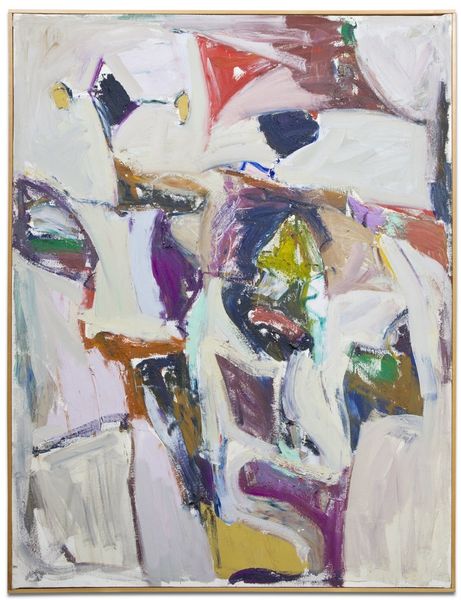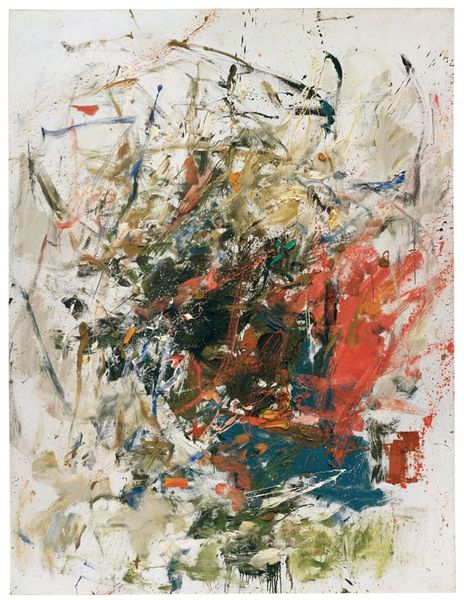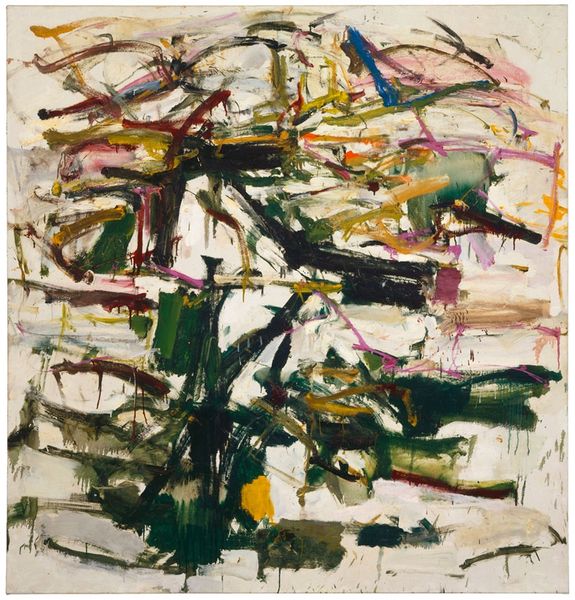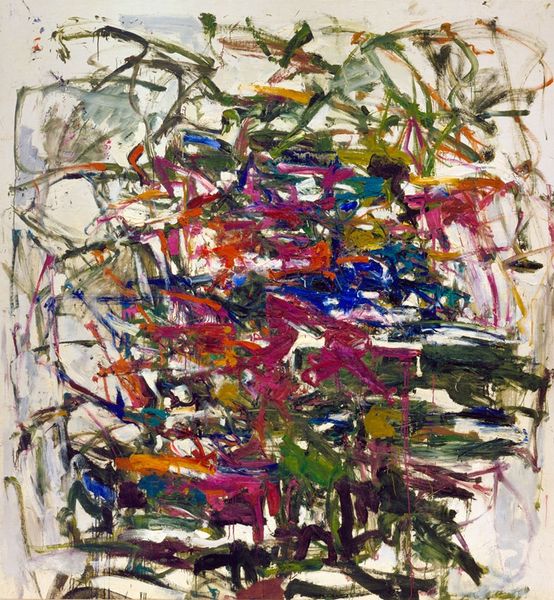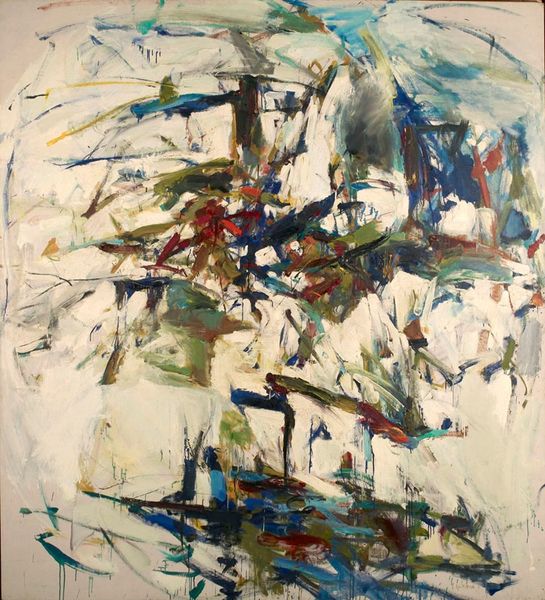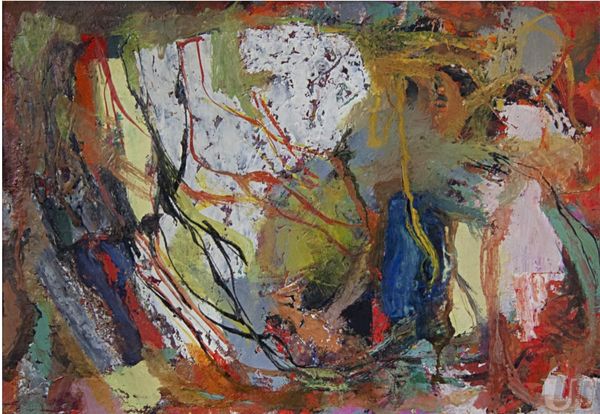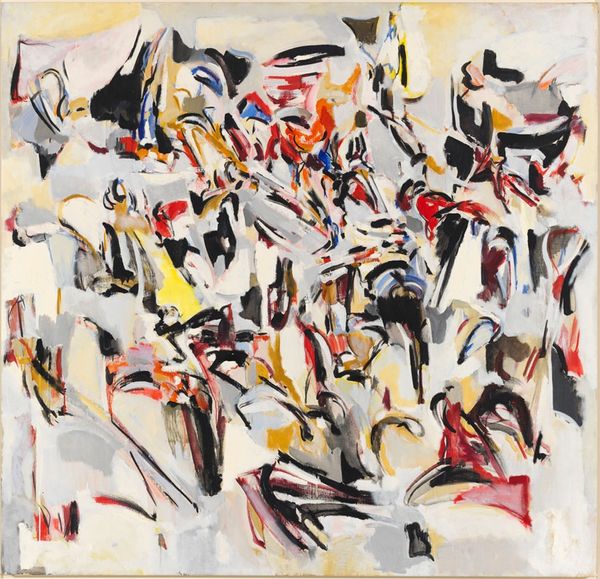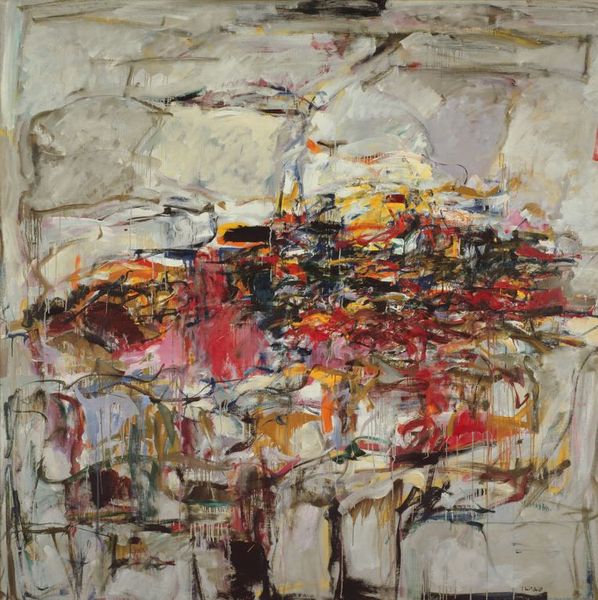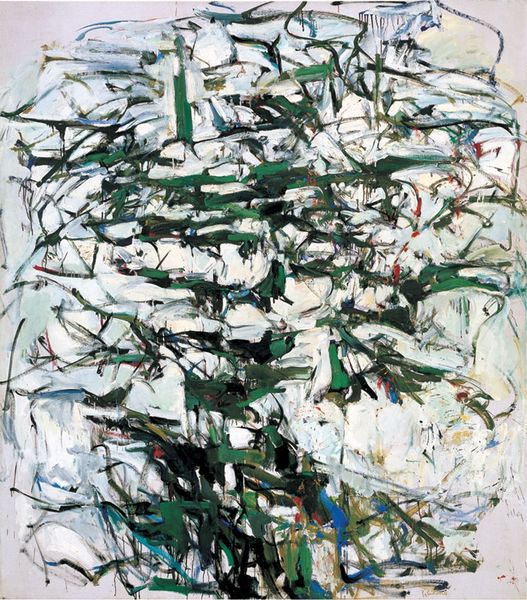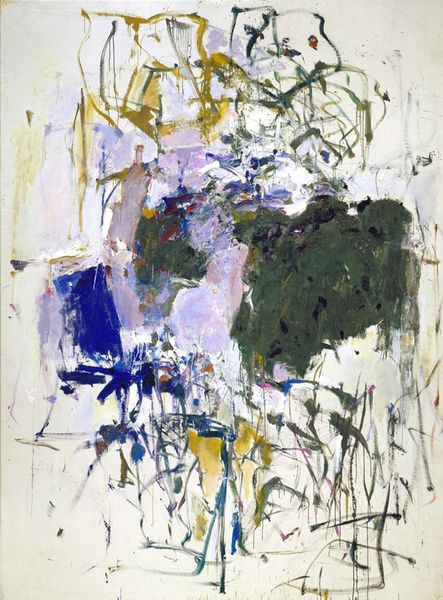
painting
#
abstract-expressionism
#
abstract expressionism
#
painting
#
abstraction
Copyright: Joan Mitchell,Fair Use
Editor: We are looking at Joan Mitchell’s "Untitled" from 1952, housed here at Crystal Bridges. Painted with oils, this large canvas is awash in dynamic brushstrokes, mainly in white and neutral tones, punctuated with sharper reds and blacks. I am struck by the sheer energy of it. How do you interpret this work? Curator: For me, it’s about inherited visual languages. Notice how Mitchell employs the vigorous gestural marks reminiscent of de Kooning and Pollock. But are they *really* abstract? Or, do these slashes, lines, and scattered color fields evoke a submerged memory of landscapes, perhaps a half-remembered horizon or grove of trees? Editor: That’s interesting, a memory of landscapes. I see the energetic brushwork but hadn’t considered how they might be a sort of symbolic representation of something tangible. Curator: Think of Abstract Expressionism less as pure abstraction and more as the visual residue of feeling, an echo of personal and collective experiences embedded within form. It's a fascinating dance between the visible and the invisible. What do the colors suggest to you? The sparing use of red, for example? Editor: The red does stand out. Maybe urgency? Or passion? The restraint seems intentional. It almost feels like a secret language, personal symbols scattered across a canvas. Curator: Precisely. And those "secrets," if we can call them that, connect us across time. This canvas isn’t merely paint; it is a vessel containing a spectrum of human experience. Visual clues acting as pathways to memories, emotions, experiences. Editor: I never thought of abstract art as holding secrets, cultural or otherwise. Now I'm viewing the whole movement with fresh eyes! Curator: And that's the beauty of it, isn't it? Uncovering hidden symbols in plain sight.
Comments
No comments
Be the first to comment and join the conversation on the ultimate creative platform.

